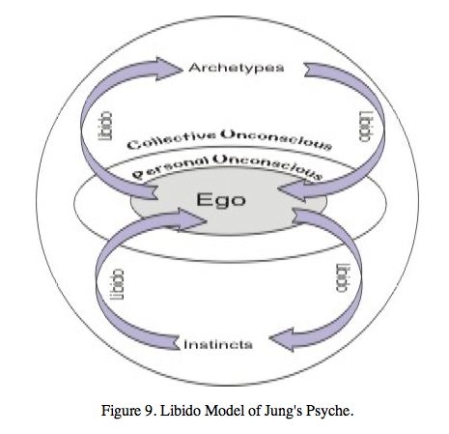One of the most important concepts that my research aims at addressing is subjectvity and how we’ve come to terms with a new emerging idea of the subject.
Kathreine Hayles in “how we became post-human”, chews this topic over and over, bringing in and reconciling the major forces of post-modernism and cybernetics.
Together with the problematic issue of the construction of subjectivity from a cultural point of view, Hayles identifies technology and late research in biology / genetics as the ones responsible for rewriting human subjectivity away from individual agency into something more complex and in line with a post modern view of the world.
Technology has changed the way we look at ourselves, because we have observed and constructed machine that shows to us the way WE ourselves function.
Her concept of distributed cognition is the key to redefine the individual into a system of “parts” not necessarily technological , but biological, cultural etc that are continuously exchanging information. The metaphor of the Chinese room by John Searle (paraphrasing Hayles pppp 298) –> distributed cognitive systems replace “subjects”…. conscious agency, a world made of systems.
Hayles argues that whilst digital technology and computer networks have made this phenomenon clear and well recognized, humans have always used distributed cognitive systems. Cave painting, writing, the printing press are themselves some old forms of external memory slots. Mcluhan meets system theory / cybernetics. Since in Macluhan-esque fashion, our technology is the “extension of man” , not only from a physical point of view but also from an epistemological / cognitive one.
As I always liked to connect the Jungian idea of Psyche to this “distributed subjectvity”, I would say that this had always been a multi part structure. Complexes, archetipes, images, memories, animal instincts, cultural factors are for Jung the mobile parts of the individual mind that are held together by information and communication that are both conscious and unconscious.
I report here some graphic representations of this models of the Jungian psyche [thanks tohttp://www.schuelers.com/ChaosPsyche/part_1_17.htm].
Without paying too much attention to the definition of the single parts, it is clear that Jung thought of the psyche as an open system revolving around a center of “gravity” or “energy”. The key word here, as for other types of open systems, is “CONNECTIVITY”, or communication. It is the flow amongst the system’s parts and its relation to other “parts” in the outside world that provides the balance and health of the system.



The following brief extracts from C.G. Jung’s extensive writings are both resonant with Gaia theory and cautionary in this context.
(NB: CW denotes Collected Works of C.G. Jung [© 1960 by Bollingen Foundation, New York, NY. Second edition © 1969 by Princeton University Press. Reprinted by permission of Princeton University Press], and is followed by volume number; § denotes paragraph number.)
“…the psyche is simply ‘world’.” [CW9.1 §291]
“Since the psyche is a self-regulating system, just as the body is, the regulating counteraction will always develop in the unconscious … the psyche of civilized man is no longer a self-regulating system … it can continue to function to the point of injury…” [CW8 §159]
“The psyche … is a quality of matter, just as our body consists of matter. We discover that this matter has another aspect, namely, a psychic aspect (the WORLD OF INFORMATION vs MATTER? Bateson, mcLuhan etc). It is simply the world seen from within.” [“C.G. Jung Speaking” 1977]
“…the collective unconscious is identical with Nature … Everything that is stated or manifested by the psyche is an expression of the nature of things, whereof man is a part.” [“C.G. Jung Letters II” 1975]
unquote
This is very similar to G Bateson’s system of MIND… a whole cybernetic system, that functions through processes of “co-evolution” (A recursive vision, pp160). Cultural learning is like evolution, it is a way of operating of a recursive system that behaves cybernetically through negative feedback.

June 11, 2009 at 6:55 am |
[…] « The dawn of the subject […]
October 10, 2010 at 9:13 am |
[…] Together with the traditional representational function of science as a tool for knowledge creation, Pickering concentrates on the less discussed performative function. This concept is of great interest to me as I am getting more and more accustomed to the intrinsic performative nature of pretty much every human and non human *action*. The concept of agency that Pickering uses to think about science in a performative way is intended in the same way as K. Hayles in her “post-humanistic” world… where conscious agency and distributed cognition replace the strong segregated modernist subjectivity… or the Jungian model of psyche that we saw at the beginning of this blog. […]